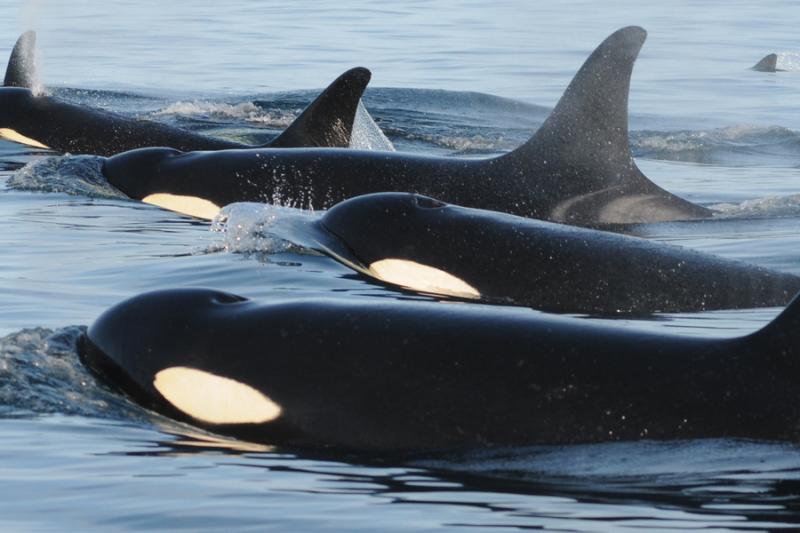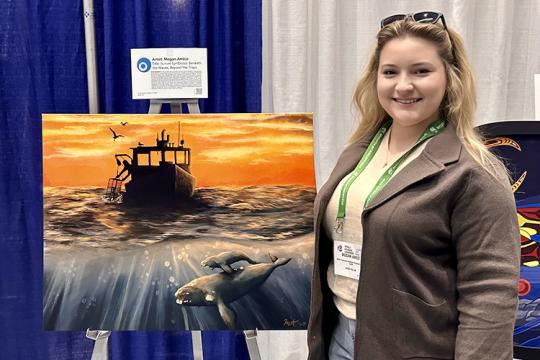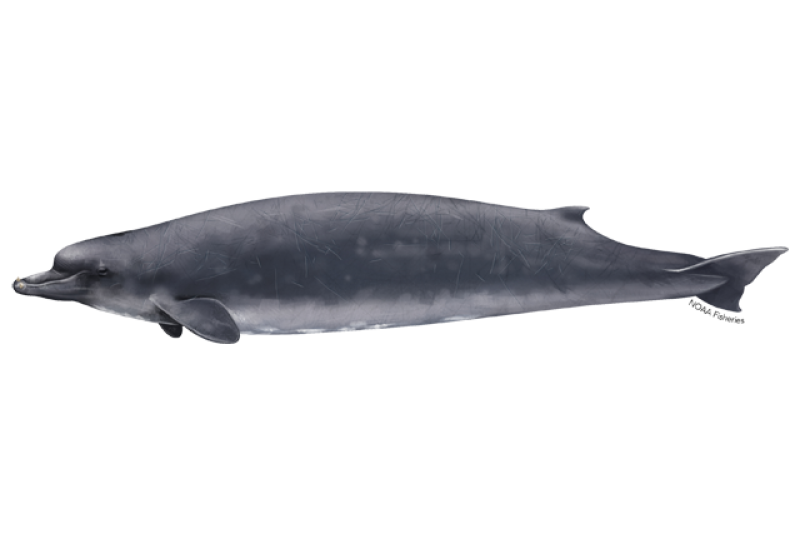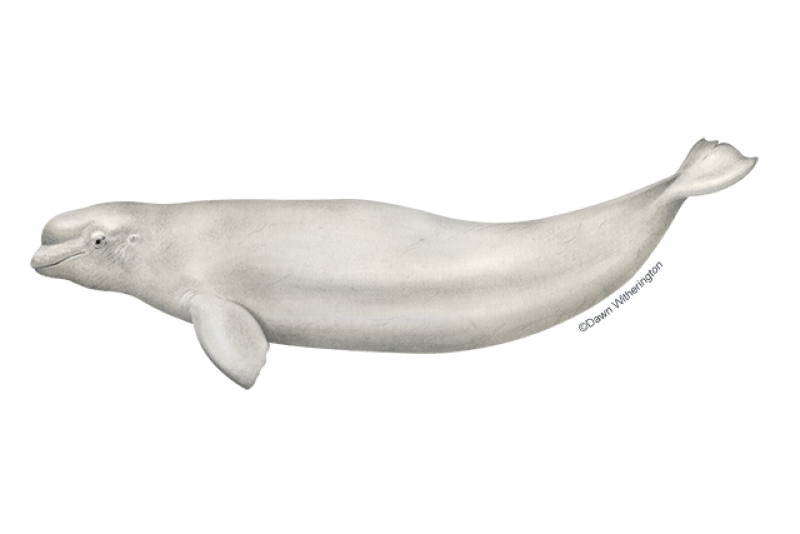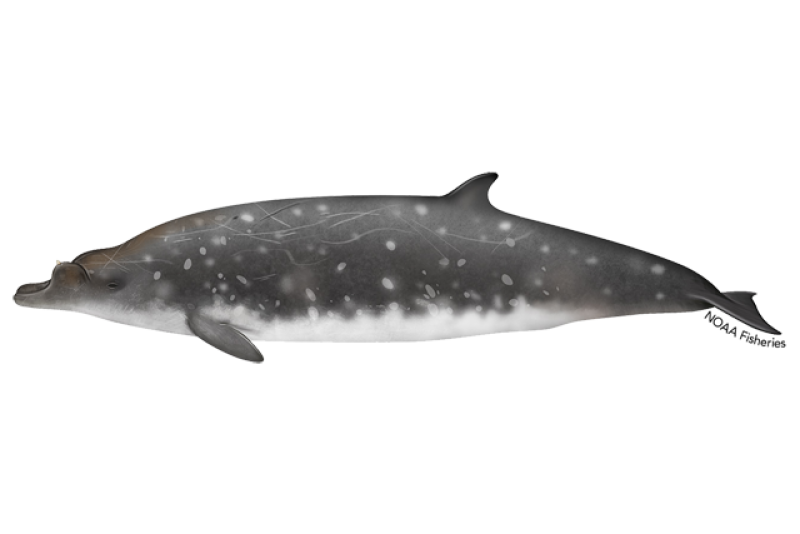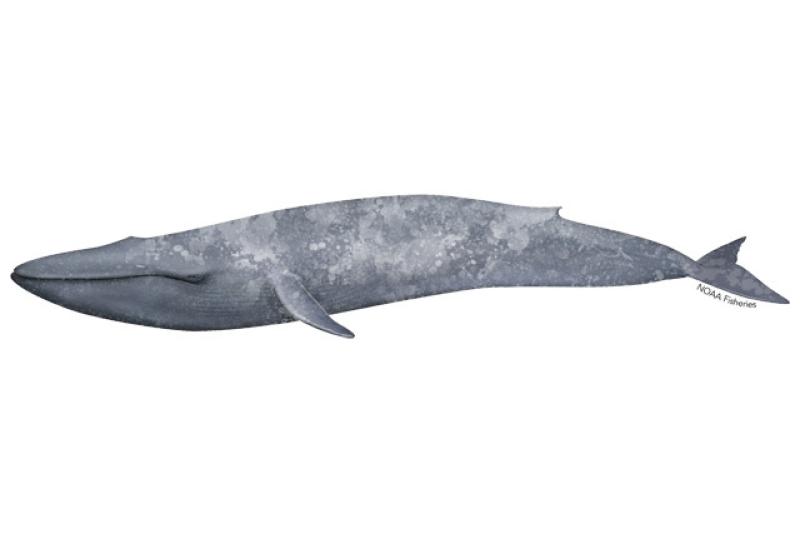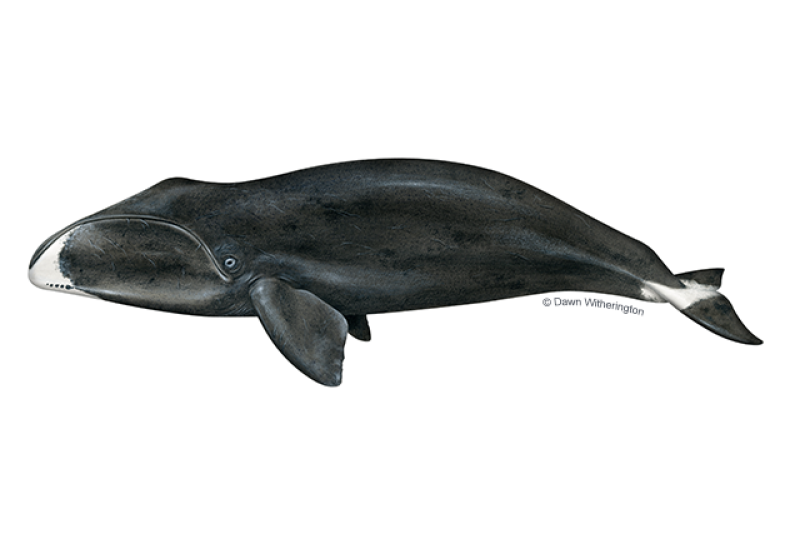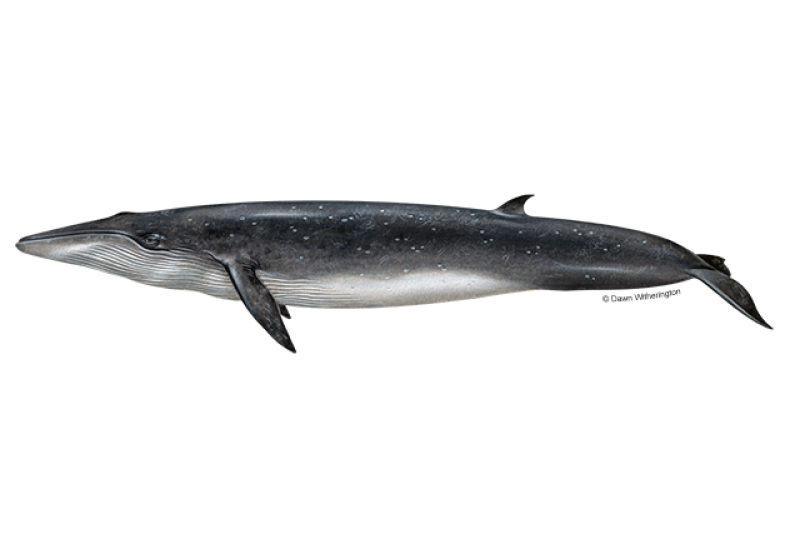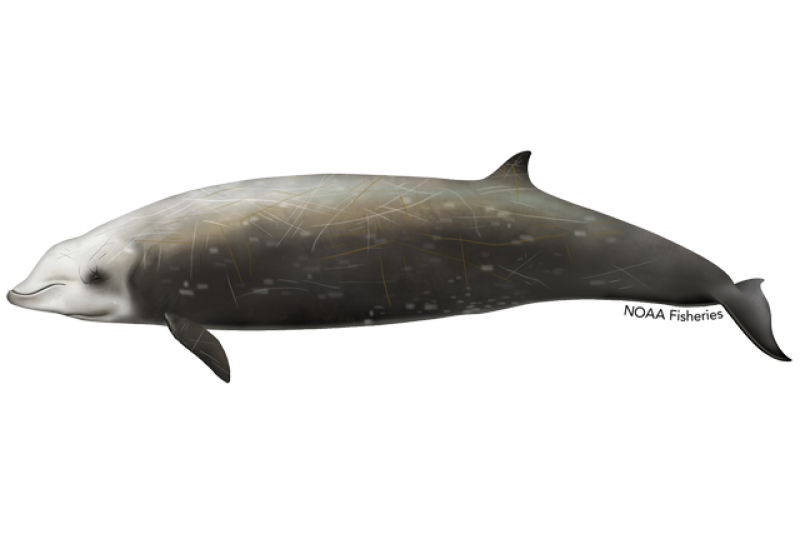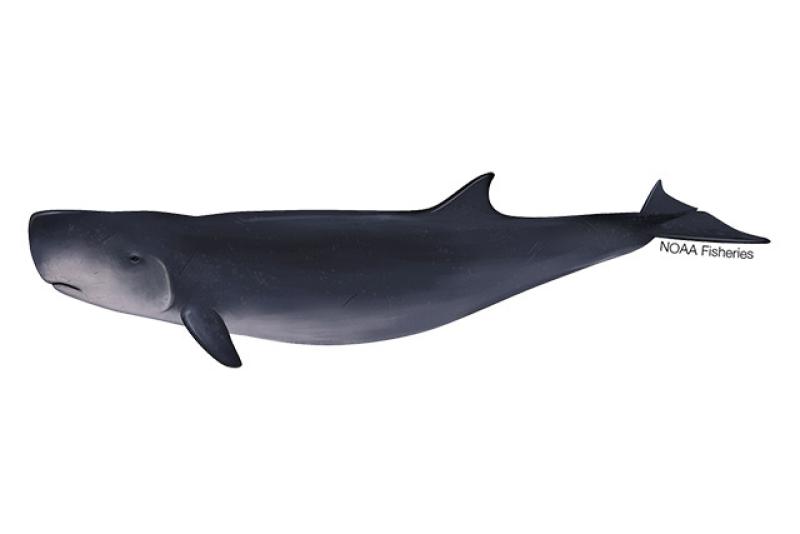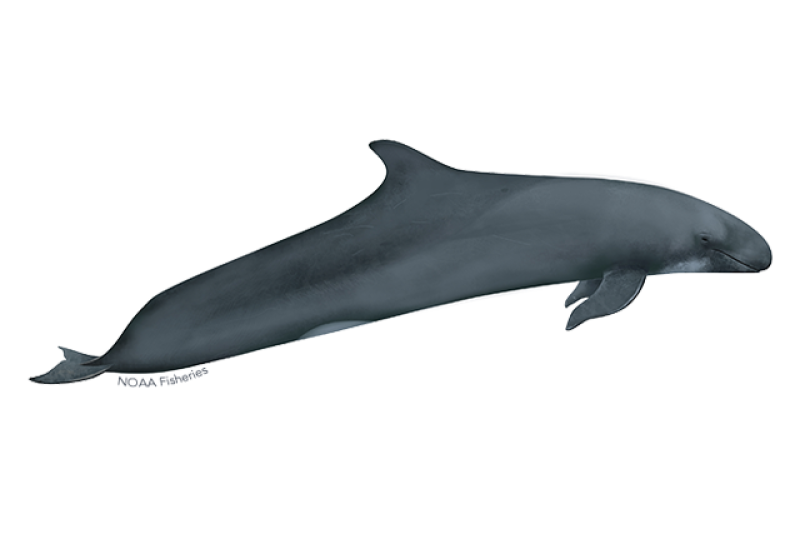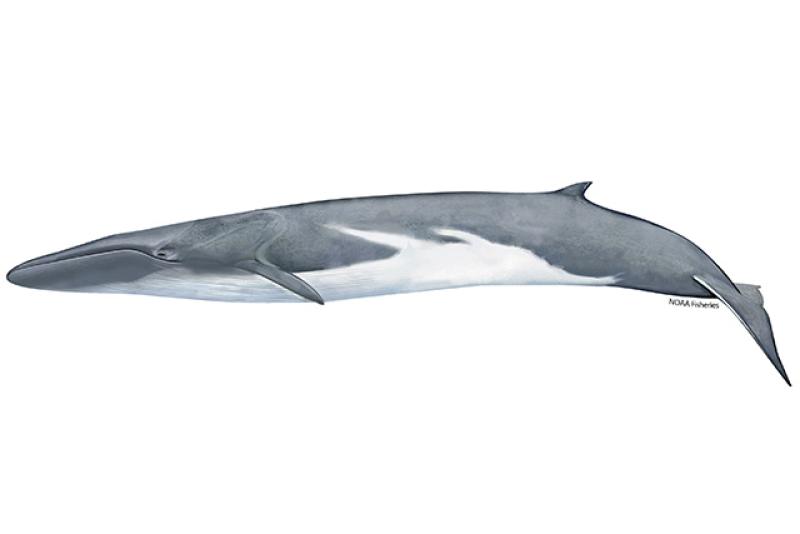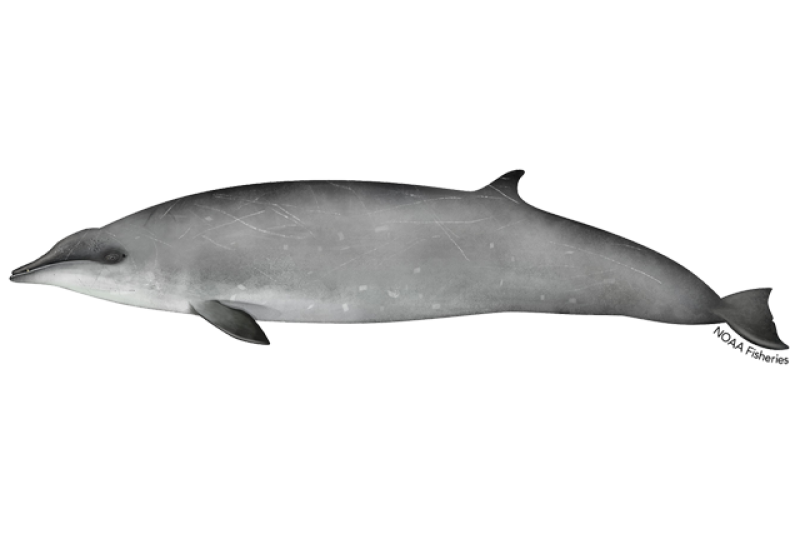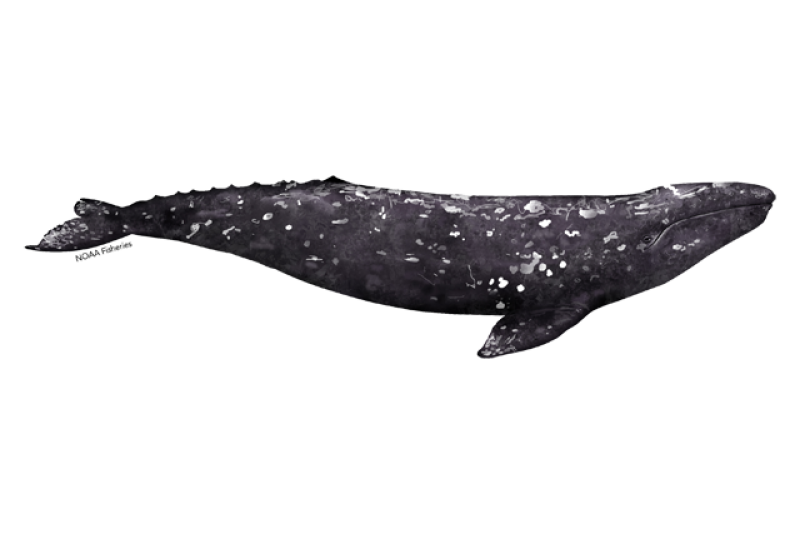Whales are among the largest and oldest animals on Earth. They can be found in every ocean and range in size from the small dwarf sperm whale to the massive blue whale, the largest animal on the planet. Whales belong to a group of marine mammals called cetaceans. Marine mammals in the cetacean family include whales, dolphins, and porpoises.
There are two types of cetaceans: baleen and toothed. Baleen whales, or Mysticetes, have baleen plates which sieve prey, like krill, from the water. Toothed whales, or Odontocetes, have teeth and feed on fish, squid, and other marine mammals such as seals and sea lions.
Together with our partners, we work to ensure the conservation of whales which are all protected under the Marine Mammal Protection Act, and protect and recover those that are listed under the Endangered Species Act.
Species News
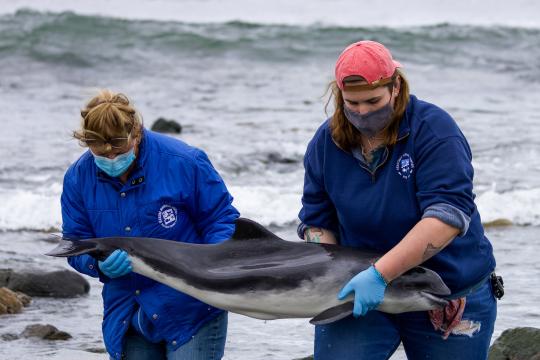 A harbor porpoise is retrieved from the rocks at Odiorne Point State Park, New Hampshire. Credit: Seacoast Science Center
A harbor porpoise is retrieved from the rocks at Odiorne Point State Park, New Hampshire. Credit: Seacoast Science Center
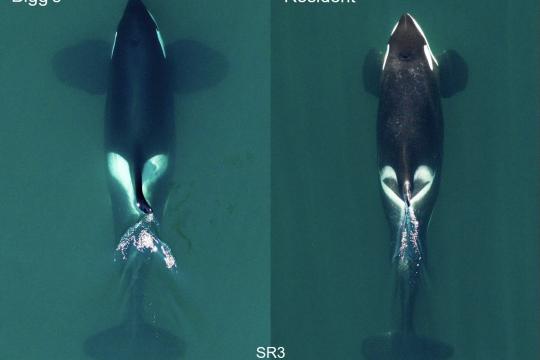 Aerial images comparing the sizes of adult male Bigg’s and Resident killer whales, both taken in the Salish Sea off southern Vancouver Island. Images are scaled to lengths calculated during health research by SR3 SeaLife Response, Rehabilitation and Research. Images were collected by John Durban and Holly Fearnbach using a non-invasive drone authorized by research permit 19091 issued by the US National Marine Fisheries Service (NMFS).
Aerial images comparing the sizes of adult male Bigg’s and Resident killer whales, both taken in the Salish Sea off southern Vancouver Island. Images are scaled to lengths calculated during health research by SR3 SeaLife Response, Rehabilitation and Research. Images were collected by John Durban and Holly Fearnbach using a non-invasive drone authorized by research permit 19091 issued by the US National Marine Fisheries Service (NMFS).
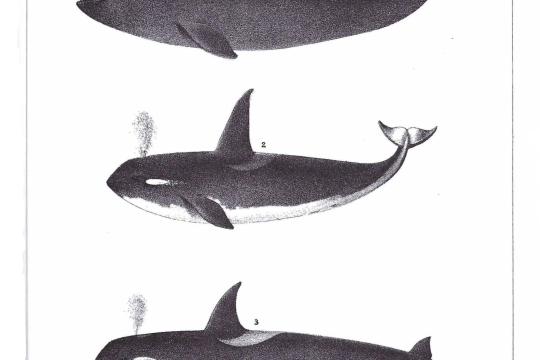 California whaler Charles Melville Scammon first described the killer whales of the West Coast, and documented his observations and findings in a manuscript he sent to the Smithsonian Institution.
California whaler Charles Melville Scammon first described the killer whales of the West Coast, and documented his observations and findings in a manuscript he sent to the Smithsonian Institution.
Multimedia
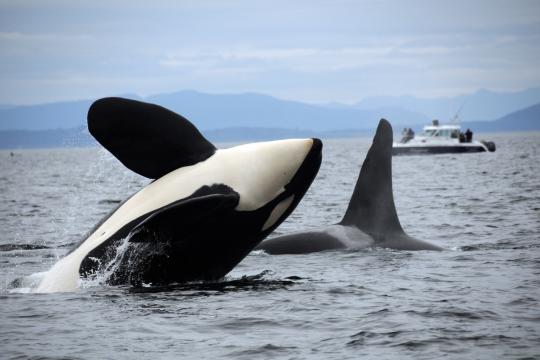 A Southern Resident killer whale leaps out of the water. Credit: Candace Emmons
A Southern Resident killer whale leaps out of the water. Credit: Candace Emmons
 North Atlantic right whale Horton and newborn calf. Credit: Clearwater Marine Aquarium Research Institute, taken under NOAA permit #26919.
North Atlantic right whale Horton and newborn calf. Credit: Clearwater Marine Aquarium Research Institute, taken under NOAA permit #26919.

Research
Publications by Northeast Passive Acoustics Branch Staff
We regularly publish their findings in scientific journals and Center-produced documents.
Rice's Whale Occurrence in the Western Gulf of Mexico from Passive Acoustic Recordings
This research summarizes acoustic detections of Rice’s whales in the western Gulf of Mexico,…
Frequently Asked Questions—Rice’s Whales
Learn about Rice’s whales—their population status, habitat, threats, and other frequently asked questions.
Frequent Questions—San Pedro Basin Whale Falls
Whale falls provide an opportunity to explore the role of carbon capture in climate change mitigation.
Understanding Marine Mammal Protections
Learn how NOAA Fisheries protects all marine mammals under the Marine Mammal Protection Act.
